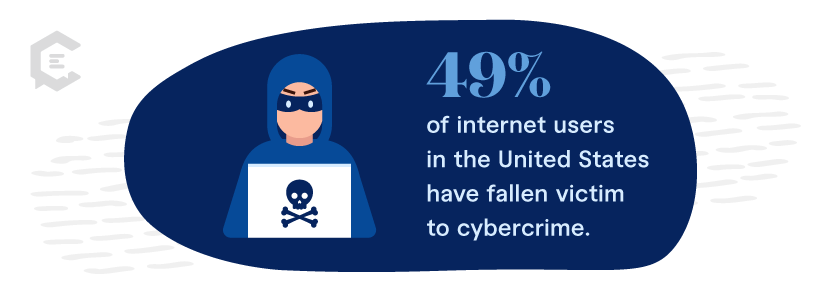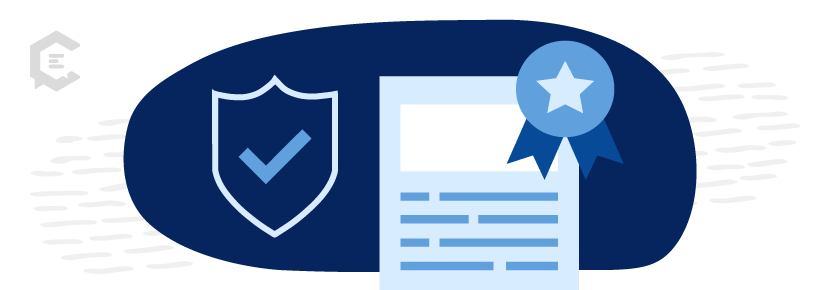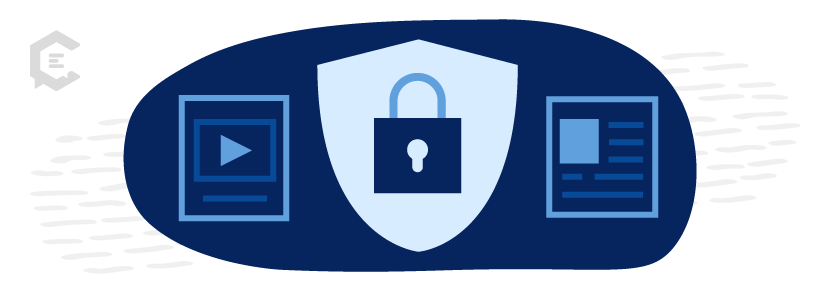When you think of educational content for cybersecurity, you might not think of content marketing right away.
But in fact, this type of content serves a dual role. You can teach your audience what they need to know to stay safe while simultaneously increasing leads and conversions. There’s a ton of opportunity in the space stemming from the constant evolution of cybersecurity threats. As the threats evolve, so does the need for new educational content. You just need to know how to do it right.
Let’s break down how you can use content marketing in cybersecurity to amplify your content strategy efforts.
The Rise of Content Marketing in Cybersecurity
Cybersecurity has been critical since the dawn of the Internet (which isn’t too surprising). What is surprising is how siloed it’s been. For over a decade, businesses implemented various paid or do-it-yourself security measures and hoped for the best. In fact, many consumers were even reluctant to install anti-virus software on their home computers.
But over time, news stories about high-profile cyber breaches began penetrating this resistance. Security companies also stepped up their game. Today’s educational content explains not only how consumers and businesses can protect themselves but also why it matters.
Why cybersecurity matters today
As more and more people conduct business on the internet, cybercrimes have also been on the rise.
- 2023 had a record high number of data compromises in the U.S. in a single year.
- 75% of businesses were hit by a ransomware attack last year.
Recent high-profile attacks include:
- Guardian newspaper ransomware attack of 2022
- The FAA ground stop on January 11, 2023 (which may or may not have been a cybersecurity incident).
- Data breaches such as the recent global attack hit everything from federal agencies to state driver’s license bureaus.
Threat landscape evolution
The threat landscape continues to evolve. Phishing attacks remain common, but they are no longer relegated to email. Now similar attacks are popping up in QR codes, SMS text messages, and other mobile technologies. And these attacks are often paired with ransomware. Helping consumers understand these threats through your Tech and SaaS content marketing is a great way to position your company as a trusted leader.
Business impacts of cyber incidents
Cyber-attacks can destroy a business financially and ruin its reputation, leading to:
- An average stock decline of 7.5%
- About 46 days to return to baseline stock value
- Average financial losses of more than $9 million
- Long-term costs in everything from credit rating downgrades to the loss of public trust
The Role of Content Marketing in Promoting Security
Content marketing can’t force businesses or consumers to become more security-conscious. But it can educate them about the rising risks and encourage them to make smarter choices.
Brand trust and credibility
One of the core goals of content marketing is establishing authority in your industry. Creating quality Tech and SaaS content helps to convince potential customers that you have a trustworthy and credible brand. When they are ready to purchase cybersecurity services, they’ll be more likely to choose your company.
Educating the digital consumer
Many new and returning cybersecurity service buyers must perform extensive research before settling on a solution. Providing ample educational material acts as a lead funnel for those buyers, plus they allow customers to educate themselves and find answers instead of reaching out to customer support staff.
Crafting Engaging Cybersecurity Educational Content
So how can you craft cybersecurity educational content that truly engages your target audience? By focusing on two core factors:
1. Your audience’s needs
Who is your company’s ideal customer? Do you sell SaaS security plans to enterprise-level businesses? Or are your products and services targeted at the home market? How familiar is your target audience with the language of cybersecurity? What specific needs does your company address? What problems can it solve?
Figure out exactly who your readers are and what they need, and you’ll go a long way toward deciding how best to engage with them.
2. Storytelling for cybersecurity awareness
No matter your target customer, the basics of good content marketing remain the same. Cybersecurity can be a dry, dull topic. It’s your job to bring it to life with narrative structure and storytelling. Remember, “show, don’t tell.”
Personalize cyber threats
One way to do this is to make it personal. Personalization strategies start with creating a specific persona and writing to that imaginary person. Talking to a single person through your writing is often much easier and more effective than trying to write to an entire group.
Real-world case studies and their importance
Providing real-world case studies is another valuable way to help your audience understand what’s at stake. It’s easier for someone to imagine themselves in a specific situation than to try to understand how general data applies to them. Case studies also help build credibility by demonstrating that you know what you’re discussing.
Bonus: Making technical concepts accessible
Cybersecurity is a highly technical field. Unless your target audience consists solely of tech professionals, you’ll need to make it more accessible.
Infographics and visual aids
Many people are visual learners. Providing an infographic, pie chart, or other visual aid helps them understand data in a whole new way. It also gives them something to share with their organization or to present to their manager making a purchase decision for cybersecurity services.
Interactive content like quizzes and simulations
Interactivity is a great way to make your content more accessible and engaging. Give people something to do, and they are less likely to click away. Interactive content can also help them better understand what you’re trying to communicate.
In addition, interactive content can form a great sales pitch. Consider offering free quizzes for employers to test their team members’ existing knowledge of cybersecurity threats and best practices. If they fall short, the employer may then see the need to invest in cybersecurity training.
And if you don’t have people with the right expertise on your in-house team, don’t worry. Outsourcing your B2B SaaS content is a great way to use the right creators that match your needs without breaking the bank or wasting time.
Best Practices in Cybersecurity Content Marketing
When developing your educational content for cybersecurity, keep it grounded in the latest best practices. That means:
- Staying updated on the ever-evolving world of cyber threats: Ensure you understand the latest threats and communicate them in every piece of content you create.
- Collaborating with cybersecurity experts: It’s always worthwhile to consult with a cybersecurity expert when planning your content. Adding a quote or two to your piece can bring authority and enhance credibility.
- Prioritizing content authenticity and accuracy: Never let a detail slide for the sake of the narrative.
- Monitoring key content marketing metrics: conversions, subscriber growth, sales leads, unique page views, and brand lift.
- Conducting audience surveys and focus groups: Gather valuable information from those who already consume your content. Ask targeted questions that require well, thought-out responses instead of a simple yes or no.
- Adapting to the changing digital landscape: The digital world continues to evolve, and so should how you frame your educational cybersecurity content. Artificial intelligence, augmented reality, and other tech tools can help you present your content in new ways. Continuously iterate on new ways to educate your target audience.
The Future of Cybersecurity in Content Marketing
Cybersecurity threats constantly evolve, and proactive vigilance is the best way to address them. Content that focuses too heavily on one specific type of threat is likely to become outdated quickly. Instead, help your audience learn to recognize and cope with emerging threats. This will help to ensure that your educational materials remain relevant well into the future.
And if you need any help with your content creation, you can partner with a content agency like ClearVoice. We have a ton of top-notch, proven Tech and SaaS creators in our Talent Network who are ready to help you produce the content you need, when you need it. Connect with us today to see how we can take your B2B SaaS content to the next level.







